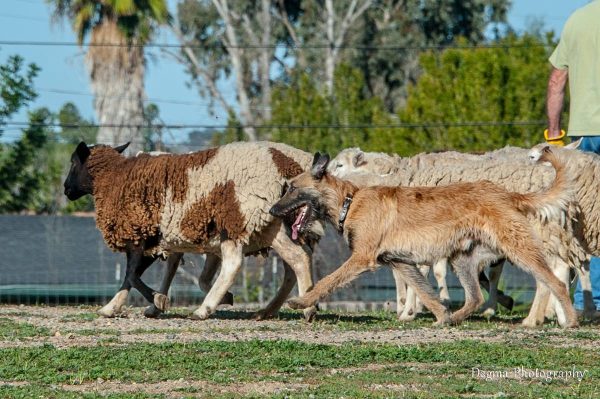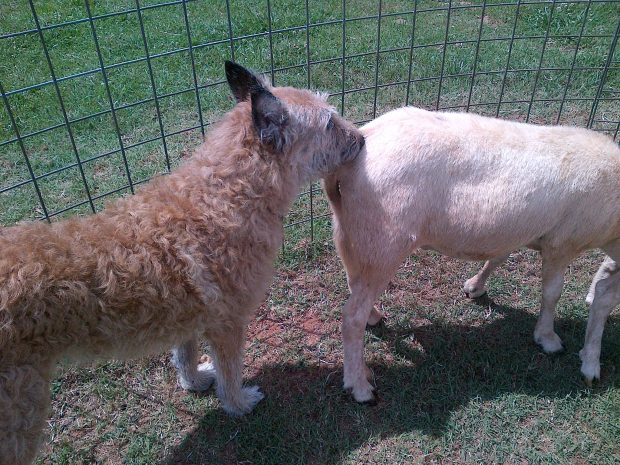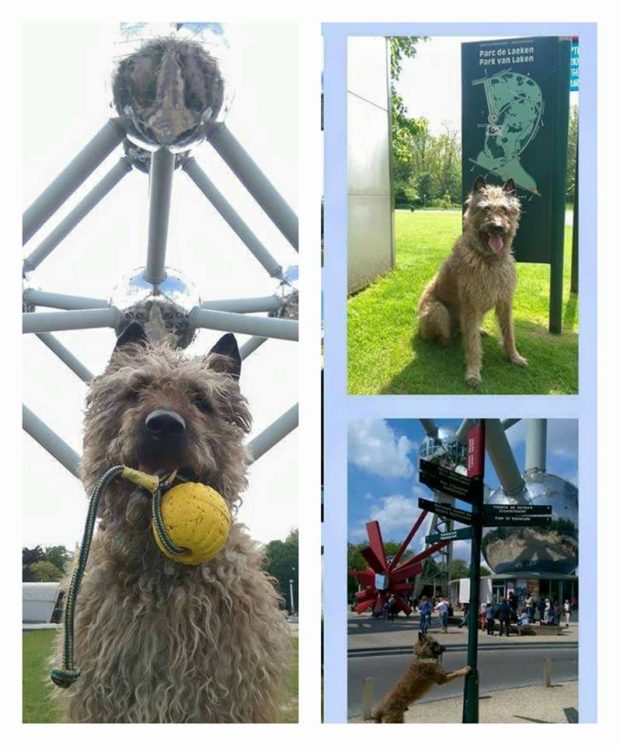
Many of our breeds are the result of the dedication of a few individuals, and sometimes, the vision of just one person. In the 19th century, a professional shepherd from a suburb of Brussels, M. Adrien Janssens, was that one person for the Belgian Laekenois.
Janssens’ dogs were “yellow and fox” colored, and as they say, “he so didn’t care.” In his view, color was irrelevant because “a good dog can’t wear a bad suit,” and he had good dogs indeed. As herding dogs, Janssens’ dogs had a “tending” style used to keep the flock together while grazing or moving along a trail, or to act as a living fence in open fields. Sometimes, the shepherd gathered his flock as he walked through the villages on his way to grazing grounds; he wasn’t the owner of the flock, mind you, but seasonal help paid by villagers to let their sheep graze on the heather or fields, and his dogs’ task to keep the sheep from venturing into gardens, crops, or fields where linen was spread out to be bleached by the sun.

Photo of “Dyna” shared by Sharri Hunt
The breed isn’t known as the “Jansenns Shepherd Dog,” of course, but back in the day, Laekens were sometimes called “Bleechoven biters.” Laekenois certainly aren’t “biters” but the old name harkens back to the late 19th century and two dogs in particular, “Vos,” born in 1885, and his daughter, “Poets,” a light fawn rough haired lass. The pair came from the Flemish town of Boom, a region with many large “bleaching field, and, unfortunately, opportunistic thieves intent on absconding with the pricey fabric. Theft was a constant problem, but the ferocious bark and no-nonsense work ethic of Vos and Poets kept bandits at bay. The two dogs – and those like them – came to be known as “bleaching field biters,” and in Flemish, “bleaching field” is “bleekhof” the plural form, “bleekhoven.” This is how the early colloquial breed name came to be Bleekhoven bijter, or Bleechoven Biter.
Over time, the breed came to be better known for the area in which it originated, the town of Laeken in Belgium, and specifically, the Chateau de Laeken (seen below), one of Queen Marie Henriette’s royal castles:


Photo shared by Rachelle Huismans-Lardenoye of
Parc de Laeken in Brussels where the royal palace is and the Atomium
We encourage anyone interested in the breed history to look for Jean-Marie Vanbutsele’s book which may still beavailable in French or English at this website: www.belgiandogs.be.
Image: Photo of Cathy Modica’s “ObiWan” at 11 months old, shared with us back in 2017
